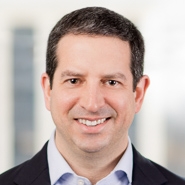Toxic Tort and Product Liability Quarterly
Experts
DC High Court Adopts Daubert Approach to Expert Testimony
In a direct victory for mobile phone manufacturers and service providers, and with implications for any other case involving expert testimony in the District of Columbia, the District of Columbia’s highest court abandoned the nearly century-old Frye test for admitting expert testimony in favor of the Daubert approach as embodied in Rule 702 of the Federal Rules of Evidence. See Motorola, Inc. v. Murray, No. 14-CV-1350 (D.C. Oct. 20, 2016). The decision to adopt the federal standard—following 39 states that have done so—came in an interlocutory appeal in litigation in which Plaintiffs allege long-term exposure to mobile phone radiation causes brain tumors. The newly adopted standard likely means an uphill battle for Plaintiffs and their causation experts in this litigation.
The litigation at issue involves 13 cases consolidated under the lead case, Murray v. Motorola, et al., in which each Plaintiff has a brain tumor, or represents the estate of someone who died with a brain tumor, allegedly caused by exposure to radiation emitted by mobile phones. Defendants are various wireless trade associations, mobile phone manufacturers, and service providers. Although no court in the country has found mobile phone use causes brain tumors, Plaintiffs offered testimony from experts in various fields to support the causal connection.
Under Frye and Dyas, a 1977 District of Columbia decision interpreting Frye, “expert testimony is presumptively admissible if the subject is beyond the ken of an average layperson, the expert is qualified to offer an opinion on the subject, the expert uses a methodology that is generally accepted in the relevant scientific community to arrive at his opinion, and the probative value of the expert’s testimony is not substantially outweighed by the risk of undue prejudice.” Once a methodology was deemed generally accepted, courts were more likely to admit future testimony based on that same methodology without necessarily looking at the way the expert applied it. Rule 702 does not require general acceptance; rather an expert must apply reliable principles and methods to the facts of the case. Each case requires a fresh look at the application of the methodology. A novel methodology could be admissible under Rule 702 so long as the expert applies the methodology reliably.
DC Superior Court Judge Frederick Weisberg held a four-week evidentiary hearing on Defendants’ motions to exclude Plaintiffs’ general causation experts. See Murray v. Motorola, Inc., 2001 CA 008479 B (D.C. Super. Aug. 8, 2014). After applying each of the Frye/Dyas factors to the experts’ opinions, Judge Weisberg concluded “some, but not all, of Plaintiffs’ proffered expert testimony on general causation is admissible,” but observed “most, if not all, of Plaintiffs’ experts would probably be excluded under the [Rule 702] standard.” Motorola, Inc., slip op. at 3. The court then certified for interlocutory appeal “whether the District of Columbia should adopt Federal Rule of Evidence 702 (or a revised Frye standard) for the admissibility of expert evidence.”
On appeal, the DC Court of Appeals adopted the federal approach. The Court concluded Rule 702’s focus on reliability is preferable to Frye’s general acceptance standard. The Court also considered but rejected a modified Frye approach, noting the advantages in interpretation and application that come with adopting a widely used rule.
In the context of the DC mobile phone litigation, the Court’s decision likely means some of Plaintiffs’ experts will be excluded at least in part, as Judge Weisberg forecast after Defendants raised questions about the reliability of the methodology and opinions of some Plaintiffs’ experts. The Court remanded the cases to the DC Superior Court for further proceedings to implement the new evidentiary standard. More broadly, having been issued by DC’s highest court sitting en banc, the decision is binding on all DC courts and represents a clean slate on the admissibility of expert testimony in cases still in pre-trial stages.
New Jersey Court Bars Plaintiffs' Talc Experts, Dismisses Claims
In contrast to several courts in which juries have returned substantial awards in favor of plaintiffs making similar claims, a New Jersey state court dismissed two suits alleging talcum powder causes ovarian cancer after it found flaws in the methodology employed by Plaintiffs’ causation experts. See Carl v. Johnson & Johnson, ATL-L-6546-14 (N.J. Super. Ct. Sept. 2, 2016). The Court barred the Plaintiffs’ general and specific causation experts, leaving them unable to maintain their claims.
Plaintiffs alleged their use of Defendants’ talcum powder caused their ovarian cancer. To support their claims, they offered five experts to opine on talc’s ability to cause ovarian cancer and the powder’s connection to their specific cases. The Court held a seven-day evidentiary hearing on Defendants’ motions to bar Plaintiffs’ expert testimony.
New Jersey courts have not adopted the federal Daubert approach to admissibility of expert opinions and rely instead on the Frye general acceptance test. However, courts there have implemented a modified Frye approach for toxic tort cases, under which new or developing theories of causation may be the basis of expert testimony if the expert employed reliable methods to formulate her opinion.
The Court focused on two of Plaintiff’s five experts: Dr. Graham A. Colditz and Daniel W. Cramer. In evaluating those experts’ methodology, the Court noted several weaknesses. First, the Court was “disappointed” that Plaintiffs’ experts were dismissive of anything but small retrospective epidemiological studies and all but ignored three large cohort studies that undermined their positions. Retrospective studies, the Court noted, can be susceptible to “information bias” because researchers rely on information from the past to evaluate a temporal connection between exposure and disease; cohort studies, in contrast, looked at a population of exposed and unexposed people and gathered data on the disease in the entire cohort.
The Court was also troubled by the failure of Plaintiffs’ experts to explain the biological mechanism by which exposure to talc could cause ovarian cancer generally or in these Plaintiffs specifically. Plaintiffs’ experts blamed the “inflammation” talc allegedly causes in ovarian tissue, but could not cite any study identifying talc’s inflammatory properties, nor was any inflammation observed in Plaintiffs’ tissues.
The Court criticized the experts’ attempts to use epidemiology to prove specific causation, too. Such use, the Court wrote, “is beyond the limits of epidemiology.” The Court found the experts also paid short shrift to the significant risk factors each Plaintiff had for ovarian cancer.
The Court found that neither Dr. Colditz nor Dr. Cramer employed “reliable” scientific methodologies. With this causation testimony barred, the Court dismissed Plaintiffs’ claims with prejudice.
Causation
Inability to Identify Manufacturer of Products Dooms Plaintiff's Case
In an opinion that illustrates the challenges involved with proving causation in a product exposure case, a Kentucky appellate court found insufficient evidence of exposure to Defendants’ asbestos-containing products to sustain a products liability action. See Mannahan v. Eaton Corp., No. 2013-CA-002005-MR (Ky. Ct. App. Jul. 18, 2016).
Plaintiff worked on heavy equipment at various mining sites from the 1960s to the 1980s, at times performing brake repairs and replacements resulting in the release of asbestos dust. He was diagnosed with mesothelioma in 2011 and died from the disease in 2014. Defendants manufactured or sold various asbestos-containing brake parts, which Plaintiff alleged were among those to which he was exposed. The trial court granted Defendants’ motion for summary judgment because Plaintiff failed to show it was exposure to Defendants’ products that caused his disease.
The Court of Appeals affirmed, finding Plaintiff had not identified sufficient evidence for a jury to conclude that Defendants’ asbestos-containing products had caused the Plaintiff’s illness. Plaintiff offered no evidence that Defendants’ parts were actually on any of the equipment he serviced during his career. It was, the Court said, just as likely that the Plaintiff was exposed to other manufacturers’ asbestos products as Defendants’ products; “pure speculation” is the only method by which a jury could conclude Defendants’ products caused Plaintiff’s disease.
Drinking Water Contamination
West Virginia Federal Court Issues Trio of Rulings Against Defendant in Class Action
In the class action lawsuit stemming from the 2014 spill of Crude MCHM into the Elk River near Charleston, WV, the U.S. District Court for the Southern District of West Virginia recently issued three rulings in favor of plaintiffs and against Defendant Eastman Chemical Co. Those three developments are summarized below. Previous coverage of the Elk River spill litigation is available here.
Court Rejects Defendants' Bid to Exclude Corrosion Expert
In a decision illustrating the limits of a Daubert challenge to expert testimony, the Court denied the Crude MCHM manufacturer’s motion to limit testimony from Plaintiffs’ expert as to the corrosive properties of Crude MCHM and denied a related motion for summary judgment. See Good v. Am. Water Works Co., No. 14-cv-01374 (S.D. W.Va. Sept. 26, 2016) (Good I).
Eastman challenged Plaintiffs’ expert testimony that Crude MCHM corroded the inside of the leaking tank, which caused the tank to fail. Eastman argued the expert’s testimony was neither scientifically sound nor consistent with the expert’s laboratory results and therefore inadmissible under Daubert. The Court, however, found no basis to conclude others in the field would not rely on the data gathered during the expert’s testing; the methodology, therefore, was reliable. Eastman’s challenge to the expert’s findings based on those data was, the Court wrote, “in essence a challenge to the correctness of [the expert’s] conclusion, and as such is not a proper basis for a Daubert challenge.” Good I, slip op. at 22. Because Plaintiffs’ expert raised a genuine issue of material fact as to whether corrosion was the cause of the tank leak, the Court denied Eastman’s motion for summary judgment.
Court Rejects MSDS Preemption, Sophisticated User Defense
In a separate opinion on the same day, the court also rejected Eastman’s arguments based on its Material Safety Data Sheet (MSDS) and the sophisticated user doctrine. The Court held that Eastman’s compliance with federal law in connection with its MSDS for Crude MCHM did not preempt Plaintiffs’ state tort law claims. Good v. Am. Water Works Co., No. 14-cv-01374 (S.D. W.Va. Sept. 26, 2016) (Good II). The Court found that a jury must decide whether Eastman’s MSDS should have more clearly described Crude MCHM’s corrosiveness.
The Court also rejected Eastman’s argument that the sophisticated user doctrine—whereby manufacturers of goods can reasonably rely on sophisticated buyers of those goods to pass any necessary warnings to the end-user—should apply here. Eastman argued it sold its Crude MCHM to a sophisticated customer, Freedom Industries. While recognizing that West Virginia has not expressly adopted the sophisticated user rule, the Court noted application here would require the Court to adopt Eastman’s “novel characterization and treatment of members of the public involuntarily exposed to [Crude MCHM], as if they were ‘end-users’ of the product.” Good II, slip op. at 15. Even if the Court were to so apply the rule, it noted genuine issues of material fact as to the sufficiency of any warnings Eastman gave to its customer and the customers’ understanding of Crude MCHM’s hazards.
Court Finds Lost Wage Claims Not Barred by Economic Loss Doctrine
The Court allowed Plaintiffs’ lost wage claims to proceed against Eastman but barred those claims against the water utilities that supplied Plaintiffs with tainted water. Good v. American Water Works Co., Inc., 2016 WL 5864432, No. 14-1374 (S.D.W.V. Oct. 6, 2016). Some Plaintiffs allege that the “do not use” order issued for the days following the spill caused them to lose wages when employers, such as restaurants, closed their business establishments.
Under the economic loss doctrine, West Virginia law generally bars recovery for purely economic losses where there is no contractual relationship between the parties, or where plaintiffs have not suffered personal injury or property damage. Pure economic loss may be recovered under West Virginia law where, however, a special relationship exists between the parties.
The Court found that it could not apply the economic loss doctrine in light of evidence that Eastman’s chemical had damaged Plaintiffs’ pipes, water filters, and bathtubs. The Court allowed Plaintiffs’ claims to proceed but noted that if sufficient evidence of physical damage was not found in the damages phase of the litigation, Plaintiffs’ lost wage claims would be barred.
However, the Court applied the economic loss doctrine with respect to Plaintiffs’ lost wage claims against the water utility Defendants, finding an absence of a special relationship and therefore barring Plaintiffs from obtaining purely economic losses from the utilities.
Take-Home Liability
New Jersey Extends Toxic Take-Home Liability Beyond Worker's Spouse
In a case that may help reshape the contours of so-called “take-home” toxic tort liability, New Jersey’s Supreme Court held that a company’s liability for toxic substances brought home on a worker’s clothing can extend beyond the spouse of the worker. Schwartz v. Accuratus Corp., No. A-73-14-076195 (N.J. July 6, 2016).
Plaintiffs Brenda Ann and Paul Schwartz filed suit against Accuratus Ceramic Corporation alleging negligence, products liability and strict liability after Brenda was diagnosed with chronic beryllium disease. Paul had worked at the defendant’s ceramics facility in 1978 and 1979. By 1979, Paul and Brenda were dating and Brenda often visited and stayed overnight at Paul’s apartment, which he shared with a co-worker. Brenda did the laundry and other chores at the apartment, both before and after she and Paul were married in June 1980.
Plaintiffs filed their complaint in Pennsylvania state court claiming that Brenda was subjected to take-home beryllium exposure due to Paul and his roommate bringing the substance home from the facility on their work clothing, including during the time before she and Paul were married. The case was removed to the United States District Court for the Eastern District of Pennsylvania, which found that New Jersey has not recognized a duty for an employer to protect a worker’s non-spouse roommate from take-home exposure to a toxic substance. Plaintiffs appealed to the United States Court of Appeals for the Third Circuit, which submitted a petition to the New Jersey Supreme Court, asking that court to better define the extent of potential “take-home” liability under New Jersey law.
In considering the question of law certified by the Third Circuit, New Jersey’s Supreme Court held that the duty of care may extend, under certain circumstances, to a plaintiff who is not a spouse, but the court declined to create a bright-line rule “as to who’s in and who’s out.” The court explained that the duty was based on the foreseeability of regular and close contact with the contaminated material and not exclusively on whether the injured person was a spouse or family member.
The court set forth the following factors to be considered in take-home toxic tort actions:
- The relationship of the parties, including not only that between the defendant’s employee and the injured person but also that between the defendant and the injured person.
- The opportunity for exposure to the toxin and the nature of the exposure that causes the risk of injury.
- The employer’s knowledge of the danger associated with exposure when the exposure occurred and not at a later time when more information may become available.
Beveridge & Diamond's Toxic Tort and Environmental Tort practice group defends large companies in virtually all industries against toxic tort and product liability claims involving a wide range of chemicals and related substances, including metals such as arsenic, lead, and mercury. While the majority of clients tend to be in oil, chemicals, and manufacturing, we represent any type of company with actual or potential exposure to toxic tort liability or product liability. For more information, contact the authors.












